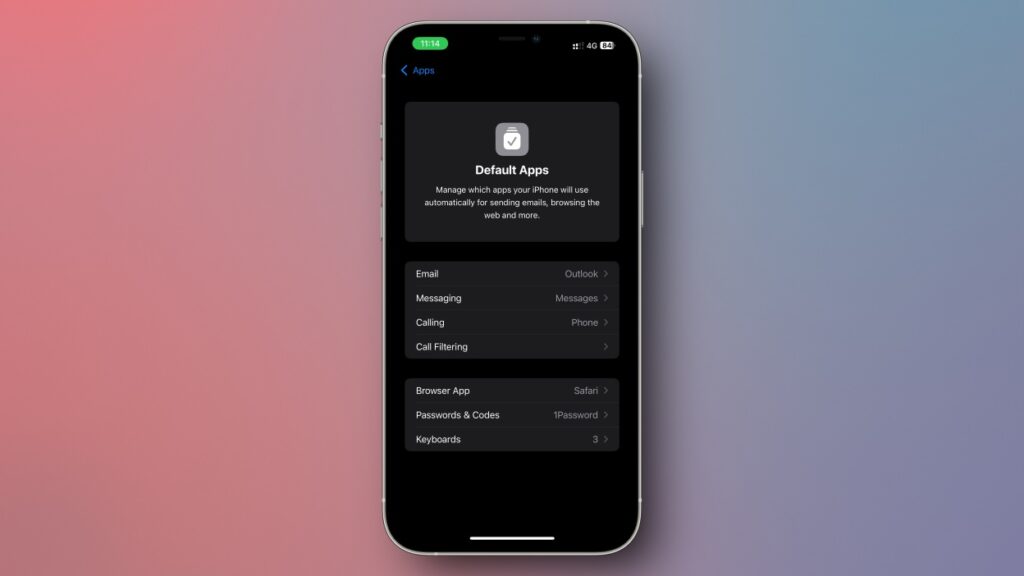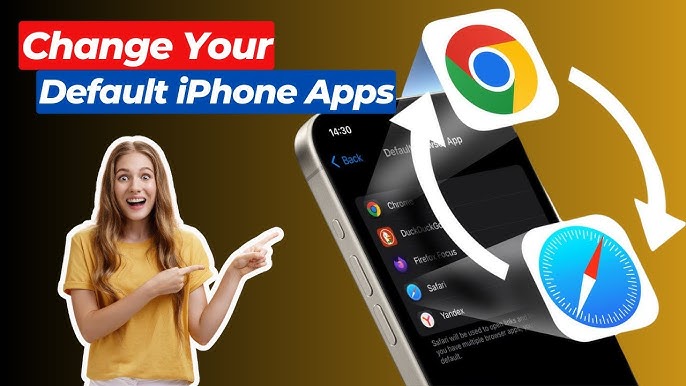Apple has finally streamlined a long-requested feature that’s going to make your iPhone experience smoother—changing your default apps. With the introduction of iOS 18.2, users can now manage their preferred default applications for email, messaging, browsing, and more, all from a centralized settings page. Gone are the days of hunting through multiple menus just to switch from Safari to Chrome or from Mail to Outlook.
Let’s break down how this new feature works, what apps you can set as default, and how to try it out today.
What’s New in iOS 18.2?
Prior to iOS 18.2, changing default apps was possible—but tedious. Users had to dig through specific app settings to assign new defaults. Now, Apple has introduced a unified Default Apps page, where all supported categories are listed in one convenient spot. This update simplifies the process significantly, saving time and reducing confusion.

At the time of writing, iOS 18.2 is available as a public beta. If you’re eager to try it, you can enroll in Apple’s Beta Software Program and install it via:
Settings > General > Software Update > Beta Updates.
⚠️ Keep in mind: Beta software may introduce bugs or instability, so it’s best installed on a secondary device.
The final public release of iOS 18.2 is expected to arrive by December.
How to Change Default Apps on iPhone (iOS 18.2)
Once you’ve installed iOS 18.2, the process to change default apps becomes remarkably easy:
📱 Step-by-Step Guide:
- Open the Settings app
- Scroll down and tap Apps
- Tap Default Apps
You’ll now see a list of all categories where you can change defaults:
- Messaging
- Calling
- Call Filtering
- Browser App
- Passwords & Codes
- Keyboards
Simply tap on any category to view a list of compatible apps installed on your device. For example:
- To change your browser, go to Browser App, and select from Chrome, Firefox, DuckDuckGo, or any other browser installed.
- For messaging, go to Messaging, and pick from iMessage alternatives like WhatsApp, Signal, or Telegram—if supported.
Note: If no alternative apps are installed, the default Apple app will remain your only option.
Why This Matters
This update represents a significant shift in Apple’s approach to user choice and customization. Whether you’re an iPhone power user or just someone who prefers Gmail over Mail, or Chrome over Safari, iOS 18.2 gives you more control without the hassle.
🔑 Benefits:
- Time-saving setup from one location
- Better app integration with your daily habits
- Enhanced personalization of your iPhone experience
It’s also a move toward greater openness in iOS, likely influenced by regulatory pressure and increasing user demand for flexibility.
Final Thoughts
iOS 18.2 isn’t just another incremental update—it introduces a practical, user-focused improvement that many have been waiting for. Whether you’re switching to a third-party browser, a new email client, or a different dialer, Apple has made the process far more intuitive.
As iOS continues to evolve, expect more options like this to become standard.

